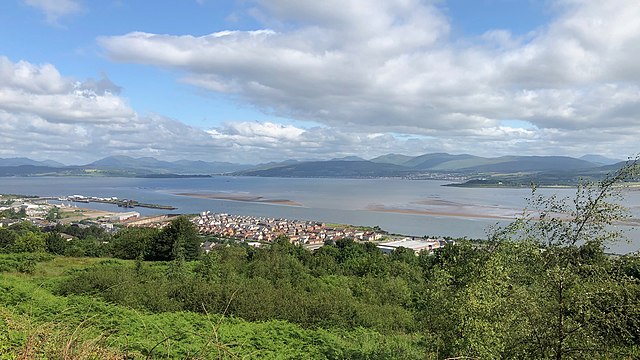Little Cumbrae is an island in the Firth of Clyde, in North Ayrshire, Scotland. It lies south of Great Cumbrae, its larger neighbour. The underlying geology is igneous with limited outcrops of sedimentary rock. Little Cumbrae House is of 20th century construction, although the island has no permanent inhabitation at present, its population having peaked at 23 in the late 19th century. There is a lighthouse on the western coast.
Little Cumbrae Island from Portencross, Ayrshire
Little Cumbrae Lighthouse
Little Cumbrae in 1828
Little Cumbrae seen from Haylie Brae on the mainland. Note Great Cumbrae in the foreground at the right and Arran beyond.
The Firth of Clyde is the mouth of the River Clyde. It is located on the west coast of Scotland and constitutes the deepest coastal waters in the British Isles. The firth is sheltered from the Atlantic Ocean by the Kintyre peninsula, which encloses the outer firth in Argyll and Ayrshire. The Kilbrannan Sound is a large arm of the Firth of Clyde, separating the Kintyre Peninsula from the Isle of Arran. Within the Firth of Clyde is another major island – the Isle of Bute. Given its strategic location at the entrance to the middle and upper Clyde, Bute played a vital naval military role during World War II.
The Seamill beach looks south down the outer firth towards southern Arran and Ailsa Craig
River Clyde navigable channel and sandbanks leading to the Tail of the Bank, seen from above redevelopments on the Lithgows shipyard site, and Greenock's Great Harbour.
The Holy Loch seen across the upper Firth of Clyde from Gourock, with Hunter's Quay to the left and Strone to the right, with the Caledonian MacBrayne ferry MV Saturn arriving from Dunoon.
Firth of Clyde, from Dunoon








